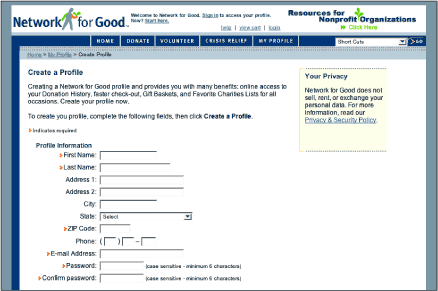Text
Do not use text color alone to convey information
Color is a common communication device. For example, traffic signals use color to direct the flow of traffic: a red signal says stop, a green signal says go, and a yellow signal is, well, open to interpretation. However, color is a nonuniversal communication device. For color to communicate effectively, the recipient must have vision and the ability to distinguish between colors.
When color is used on Web pages for visual emphasis or as part of a directive, nonvisual users and some visual users will not see it and will miss its significance. For example, if red text identifies required fields on a Web form, then people who cannot see the colored text, or cannot distinguish it from the other field labels, may not enter the required data.
Color can be used as a way to communicate information, but it should be paired with other communication methods. For visual users, pair color with other methods—such as a different typeface or bold text for section headings—to produce typographic emphasis. For visual and nonvisual users, reinforce color with context to draw attention to specific words or fields, such as marking required fields with an asterisk or with the word required (Figure 3.7).

Figure 3.7: Network for Good uses a colored asterisk to mark required form fields. The asterisk is a graphic containing the alt-text "required," which makes it accessible to visual and nonvisual users. www.networkforgood.org

